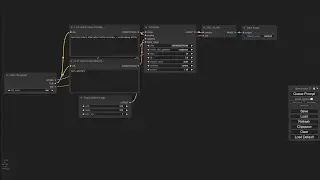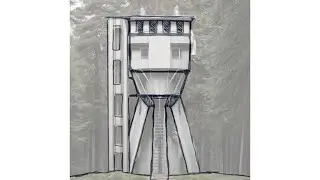Tutorial – How to find the best free Digital Elevation Model for use in QGIS as a heightmap [GLO-30]
Timestamps:
0:00 [Intro] Scope of the tutorial
0:08 [Intro] Brief overview of the three free Digital Elevation Models at hand (SRTM, GLO-30, EU-DEM)
1:10 [SRTM] Creating a USGS account to be able to download SRTM
2:17 [SRTM] Being logged in, downloading heightmap tiles of SRTM
3:52 [QGIS] Setting up the QGIS project, adding the SRTM tiles, and merging them
4:53 [GLO-30] Downloading the GLO-30 tiles via direct link, with coordinate help from OpenStreetMap
7:41 [QGIS] Adding the GLO-30 tiles, and merging them
8:14 [QGIS] Comparing SRTM and GLO-30
8:26 [EU-DEM] Downloading the EU-DEM tiles
8:59 [QGIS] Adding the EU-DEM tiles, and merging them
9:20 [QGIS] Comparing GLO-30 and EU-DEM
9:51 [QGIS] Comparing SRTM and EU-DEM
10:08 [QGIS] Declaring GLO-30 a clear winner for the best free DEM with global coverage
10:28 [QGIS] All compared DEMs are of the DSM kind, which simply registers the first point of any surface, without filtering
10:48 [QGIS] Digital Terrain Models (DTMs) are filtered depending on point surface type, retaining only the terrain
11:07 [Open DEM Searcher] Tip 1: Use Open DEM Searcher to find free DEMs on a national or regional level (including DTMs)
12:15 [GPXZ] Tip 2: Use the attribution data supplied by paid map services to identify open datasets
13:18 [Lantmäteriet] As per a European Union decision, the Swedish Surveyor's Agency will host more open data, no later than February 2025
14:28 [Outro] As for free, open, globally covering – GLO-30 still stands victorious
.........................................
Links:
EarthExplorer (United States Geological Survey, host of SRTM):
https://earthexplorer.usgs.gov/
Copernicus DEM – GLO-30 information:
https://spacedata.copernicus.eu/colle...
Direct link to site index of Copernicus free data (server for GLO-90):
https://prism-dem-open.copernicus.eu/...
– e.g. add "COP-DEM_GLO-30-DGED__2022_1" to the right of the last slash sign to list all tiles for that dataset.
OpenStreetMap:
https://www.openstreetmap.org/#map=14...
EU-DEM (discontinued by Copernicus):
https://www.opendem.info/opendemeu_do...
Open DEM Searcher:
https://opendem.info/opendemsearcher....
Example of attribution to used open data by commercial service (can be used as reference):
https://www.gpxz.io/credit
Swedish Surveyors' Agency in the process of publishing (some of) their data as free, open data:
https://www.lantmateriet.se/sv/om-lan...
QGIS:
https://qgis.org/en/site/
.........................................
The best one, that is free and with global coverage, is clearly GLO-30, as of the date of publication for this tutorial.
For Copernicus GLO-30, the difference between the DGED and DTED datasets is that DGED is supplied as 32-bit floating-point data, and DTED is 16-bit signed integer data.
In effect, it means that DTED has discrete 1-metre steps in the vertical axis, while DGED uses decimal values.
However, depending on your use case, this difference might be negligible.
.........................................
One arc-second is approximately 30 metres (30.87 metres by the equator, and gradually less the further north/south from the equator you get).
.........................................
This tutorial demonstrates to KTH Architecture students the differences between three freely available Digital Elevation Models, namely the NASA-captured SRTM model hosted by USGS, the Copernicus-hosted GLO-30, as well as the discontinued EU-DEM. A couple of tactics on how to locate freely available Digital Terrain Models on a national or regional level are also presented.
The operating system used for this tutorial is Windows 10. Running another operating system (e.g. Linux, MacOS) might amount to a different user experience or software incompatibility.
If you want to check in which computer room(s) any relevant software might be installed in – CADLAB, DFL, and ARCPLAN are in the KTH School of Architecture building – please check the following link for current status:
https://www.kth.se/en/student/it/camp...
Disclaimer:
This tutorial aims to increase student awareness of the versatility of the digital tools available for use within the context of the architectural education offered by KTH. As such, it might not be generally applicable, but on the other hand, if at least one architecture student is helped by it in fulfilling deliverables requirements or being taught something of genuine interest, the purpose of this tutorial is satisfactorily achieved. There might be inaccuracies in this tutorial – if you identify any significant one, please tell us in the comments.











![Tutorial – How to find the best free Digital Elevation Model for use in QGIS as a heightmap [GLO-30]](https://images.videosashka.com/watch/nHV8sW2BUhQ)







